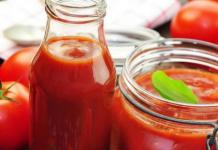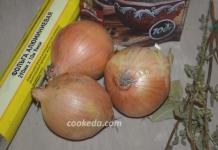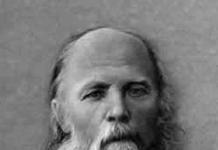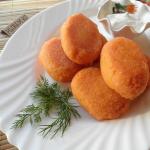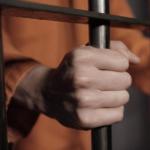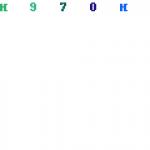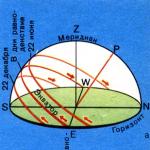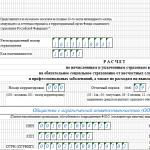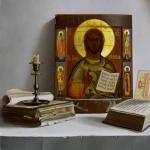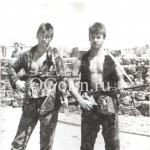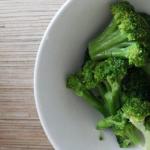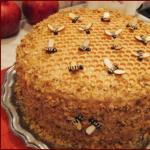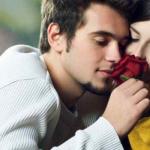How to make a lightbox with your own hands aslan wrote in March 5th, 2017
A lightbox is a box that scatters light inside itself, reflects it from the walls, and is used for product photography. We will assemble according to this magnificent, complex drawing.
Here, in fact, are the sheets of foam plastic from which the lightbox is made. I bought it at Leroy for 70 rubles.
We cut them into 35*35 squares. 7 pieces. Why 7 if the cube has 6 faces? This is the same question I asked myself when I saw 7 squares in my hands. In one of the squares we cut a hole through which the shooting will be carried out.
Using corners from the same Leroy and glue, we glue all this into a cube. Except for the front wall with a hole.
We fasten the front wall from above with hinges. That's all. So that you can always flip it up and dig around inside.
Inside, we smooth out the lower joint with a sheet of whatman paper. Glue it like this.
I recommend a couple more improvements inside. A magnet at the top of the back wall (two magnets, one glued, the other not) so that you can change the background by attaching it like this, and a magnet stuck on top, on which you can magnetize a hook for hanging pendants. Why magnet? You can then twist it however you like. This is optional.
Result:
Now lighting. I wanted the installation to be adjustable, dismountable and CHEAP.
Therefore, I bought 2 of the cheapest 10-watt spotlights and two 20-watt spotlights. A couple of PVC pipes, corners and all sorts of related parts. We collect according to this scheme:
Using a hacksaw we cut off what we need. Heating the end of the pipe in a circle to the point of “damn, it’s time to go,” we squeeze them into the corners. They still won’t stick together, because to do this you need to heat both parts at the same time, and I don’t have a device, so don’t, so please. Therefore, they will fly out of there, but we will decide this.
The pipes look like this after squeezing
We cut the corners going to the vertical posts as shown, and put clamps with wings on them. I'll tell you why later. We screw all other fastening points with self-tapping screws so that they do not fall apart.
Insert vertical beams. For aesthetics, we seal them on top with plugs. It is very important.
We take fasteners. We measure the required distance and screw them to the spotlight. Of course, when calculating the design, it is necessary to take into account the distance between the mounting holes on the spotlight brackets.
I won’t dwell on the topic of electrical connections; if anyone is unable to connect two wires, then they definitely haven’t read this far.
Let's fasten it!
Everything is adjustable, everything is reliable, everything can be disassembled!
And this is how everything is assembled. Small spotlights for touches.
Remove a little light, add a little. You can put it right on top.
But these are the shots we get. Filmed on a phone, without processing, and the phone is not the coolest (Xiaomi)
Good day to all.
Sooner or later, any photographer wants to achieve the maximum quality of his photographs. Of course, there are many ways to achieve excellent photo quality. This includes the correct placement of light on the sides of the object, the use of beautiful backgrounds, as well as processing in Photoshop.
You can, of course, use professional equipment, but this can only justify itself if you are a professional photographer, and this is your main income, then you can already create such a photo studio. But of course, at home you need more compact shooting devices.
A photobox or lightbox (as you prefer to call it) belongs to just such devices.
The convenience of its use is precisely due to the mobility and saving of “papers” in your wallet. It does not require much space, and with minimal lighting it makes it possible to get high-quality photos with uniform illumination of the object. You can choose absolutely any background, or, conversely, take a photo of an object without a background, without resorting to Photoshop to bleach the background.
There is a large selection of ready-made photo boxes on sale, but their prices are high. And many are interested in how to make such a photo box at minimal cost. I’ll talk about this in today’s review.
To create a frame, you can use various materials, the choice is yours:
1. Metal construction. On sale you can freely find profiles for making mosquito nets, there are several types and sizes.

To assemble such a frame, you will need plastic corners to connect the profiles. Corners are also sold individually according to profile size.

2. Wooden slats. Everything is simple here, cut it, put it together, ready.
3. Cardboard frame. We take an ordinary box, for example from under a TV, and cut out the windows.
4. Plastic (PVC) water pipes. I chose them to make the frame.

What pipe diameter to use is decided individually, I chose 20mm. You also need to decide right away what maximum size you want the photo box to be. I made the length of the pipe section 50 cm.
So, the list of things required to make a photo box:
1. Plastic (PVC) pipes - 6 meters. (12 pieces of 50cm each)
2. Connectors (PVC adapters) for pipes - 8 pieces angular, 4 pieces straight. (if the store has two-plane tees, then there are 8 of them)
3. Plug - 1 piece.
4. Light bulb socket - 1 piece.
5. Switch for the sconce wire - 1 piece.
6. Electrical cable 2x0.5 - 5 meters (meterage optional)
7. LED light bulb.
8. Ceiling light.
9. White fabric.
Photos required:





The fabric I used was satin, which I had lying around since the times of the USSR. The lampshade, also from that era, was available.
If you don’t have a lampshade, then you can easily make one using Penofol.
It is a thermal insulating material and has a reflective surface just right for enhancing light. In stores there is a choice of thicknesses, and they are inexpensive. You can simply roll a piece of penofol into a cone, secure it, and the lampshade is ready.

So, let's start assembling.
To reflect the light inside the lampshade, I used regular foil..., yes, yes, also from the USSR era. There were good times, so many useful things remain...)


I think that connecting the cable will not cause any difficulties for anyone, but I’ll show you just in case. Still, a step-by-step review.
Let's disassemble the switch.


We measure the distance on the cable to the place where the switch will be located. To install a switch on a cable, you do not need to cut the cable completely in half. It is enough to rip open its belly (like cutting a fish), take out one wire and, after cutting it and stripping the ends, connect it in the switch. And lay the rest inside on the opposite side in the groove.



That's it, the switch is ready.

Now we connect the wire to the plug and socket.



Of course, lighting cannot work without the main light source - the light bulb.
There is a huge selection of light bulbs on sale, regular, halogen, LED, etc. Conventional incandescent light bulbs are not suitable, they are not bright enough and the light is far from daylight. Halogen lights are bright, but they also emit a lot of heat, and they also need to be handled very carefully, you cannot touch them with open hands, and they also have a short service life.
But LED lamps are very suitable for lighting a photobox. Bright, even light, low power consumption, very little heat generation during operation, unpretentious to use.
My choice fell on the LED cold light lamp Supra SL-LED-PR-A60-10W/4000/E27.




The lamp has good stated technical characteristics:
Consumption - 10 W
Luminous flux - 850 Lm
Color temperature - 4000 K
The manufacturer promises a lamp life of 30,000 hours, almost 3.5 years. I note that the lamp really shines with a very bright, even light, the lighting is almost like daytime, and does not change the color of the object when shooting.
The flask has a matte finish.

There are restrictions on the use of LED lamps. The manufacturer indicates this on the box.

We insert the light bulb into the socket and check the functionality of the resulting product.


Everything works great. I’ll warn you right away, I don’t recommend looking directly at the light from the resulting lamp, it is very bright, and of course you shouldn’t point it at others or animals. As welders say, you can “catch the bunny.” I accidentally looked and caught this “bunny”.)
Now I'll move on to assembling the frame.
When I bought pipes in the store, there were no two-plane tees in stock:

Therefore, corner and straight adapters were purchased to later make tees out of them.
First you need to connect the corner and straight adapters for the pipes so that it is possible to connect the pipes themselves on three sides. This is done very simply. Straight adapters are long and need to be cut in half. There are special scissors for cutting PVC pipes, but there is no point in buying them for a one-time job. It is enough to get by with a regular hacksaw. It won’t work on metal; you’ll be sawing for a long time. But with teeth a little more than metal, intended for sawing wood, just right.

Having cut the straight adapters, we move on to the process of attaching them to the corner ones. To do this, you need to heat the cut point of the straight adapter over a gas burner so that it begins to melt, and then press it tightly and forcefully to the center of the corner adapter. There is no need to stir it until it cools down so that the parts are well welded to each other. After such “welding” work, we get 8 tees for connecting pipes.



Now let's move on to the pipes themselves. For them, I chose a length of 50 cm. Since the pipes initially involve hot welding with adapters, it will not be possible to simply insert them into the adapters; the diameter of the pipe is slightly larger than the adapter hole. You can, of course, cut off the thickness, sand it, etc., but again, everything turns out much easier using a gas burner.
We heat the end of the pipe by constantly turning it over the gas, there is no need to wait for melting!, just warm it up is enough. And then we insert it, pressing with force and constantly turning the pipe, into the adapter. It is necessary to twist so that the pipe does not weld with the adapter to obtain a collapsible structure.
The result is like this.

If you noticed, the length of the section where the thickness of the pipe is removed is different for the two pipes.
Here I will draw your attention so that you do not make mistakes!
In angled and straight adapters, the internal diameter and the length of the pipe insertion to the stop are different. Therefore, it is necessary to insert four pipes into straight adapters after heating, and the other eight into corner adapters.


Now we just put everything together and get a frame like this.


We make a cover from fabric according to the size of the frame, so that the cover is put on with effort, and the fabric does not sag too much on the sides.
And that’s it, the photobox is ready.



Inside the box, you can use a different background. The store has a huge selection of decorative plastic panels. I purchased a couple of these panels to try. One such panel costs 130 rubles. For shooting without a background, a regular Whatman paper will do, or you can also take a plastic panel, but pure white.


Well, the level of lighting and the placement of light are selected by trial and error.))) If necessary, you can add lighting on the sides of the box, this is an individual choice for everyone.
And of course, I’ll show you the result of these efforts, several photos on different backgrounds.




Without background, on whatman paper.






As you can see, the photos are of good quality, with uniform lighting. I was very pleased with the result of making this photo box. It was worth it, and it didn't take much time.
Well, now for the cost of everything:
Pipes and adapters - 240 rub.
Plug, socket, switch - 112 rubles.
Cable - 41 rub.
LED light bulb - 300 rub.
There was fabric and a lampshade, but their cost was not high.
Total - 693 rub.
I think it's generally very inexpensive. I also forgot to mention that for the convenience of shooting, I purchased an inexpensive tripod, which will help avoid unnecessary twitching/shaking of the camera when shooting an object. The price is only 300 rubles.
Made of metal. The maximum load on this tripod is 800 grams, which is quite suitable for small cameras. It stands stable on the surface, the legs are height adjustable. When assembled, it is only 15.5 cm long and 3 cm wide, weight - 115 grams.
Greetings to everyone who stopped by!
Last week, one of my reviews featured a portable lightbox for photos. Unexpectedly, the lightbox aroused more interest among the public than the hero of the review - the contouring stick from Wet n Wild.
At the request of workers, I tell you where, why, how much and how)))
A little background.
I have been interested in photography for many years, and since the advent of the first SLR camera Canon Rebel T3i I try to keep the quality of photos for reviews at the same level.
Someone will say: “Ugh, what stupidity, I clicked the label on my mobile phone and that’s enough. It’s not worth the effort, spending money on a good camera for the sake of 5-kopeck reviews is stupid.”".
I don’t force my opinion on anyone, but I get aesthetic pleasure from beautiful photographs, and I’m not too lazy to spend 2-3 hours shooting.
It's no secret that the quality of photography depends not only on the camera, but also on the light. Even with a sophisticated Mark, if you shoot in the dark, nothing good will come out of the photo.
And I’ve always had problems with the light at home: as long as it’s sunny, I work, and when it’s a day off, it’s always either sea or gray outside. So I came to the need to buy my first lightbox - i.e. cube for photo. As a rule, this is a cube with translucent walls that scatter the flow of light, and several replaceable photobackgrounds. Light is placed on the sides and top to obtain a picture with uniform illumination without gaps in the shadows or overexposure. Some people may find such photographs boring, but sometimes shooting against a white background is a necessity. Especially if you shoot for catalogs.

When I started shooting in the photo cube, I ran into a problem - my reviews began to be removed from publication, allegedly for using photos from the Internet. For some reason, those who pointed out the “error” did not think to check whether this photo is available in Google or Yandex. Well, then correspondence with the administration began, I had to prove that I was not a camel - send the source files of the photographs, where the information stated when, where and with what settings the photo was taken. It doesn’t seem difficult, but the mood is spoiled.
Not long ago I changed my place of residence, and almost all of the photo scrub had to be left at home.
In a new house with daylight, things are even worse, and there are no lamps.
So a new photo cube was ordered from Aliexpress, with already built-in lighting.
Small but remote
Price issue today from “my” seller - 762.14 rubles. or $11.62 (I took it for $9)
Active link for product - [link]
Equipment- folding photobox (white) and 2 photophones (white and black), USB cable.


Size approximately (depending on how you bend it) 22*24*23 cm.
Side faces- on magnets.



Housing material- plastic.
Because of this, the design is not particularly rigid, but it is not critical and not important to me.
The main thing is not to put anything on top of the cube, and it will not fold up like a house of cards.
Located along the top edge LED Strip Light.

Light- white, cold. Unfortunately, I won’t tell you the temperature in Kelvin))
The set includes 2 photo backdrops - white and black. Matte, glare absorbing. The material feels like foam. Easily damaged when pressed with a fingernail or a sharp object.
I had already managed to sloppily throw away the black background, leaving noticeable marks on it.
The backgrounds are attached to slots in the plastic.


Power supply is from a standard USB port. Wire included. I usually power the cube from my laptop.



Impressions from use.
First, about the pros.
- The cube is truly portable. Doesn't take up much space. Assembles in less than a minute.
- 2 backgrounds included. You don't have to shoot only "white on white". It is possible to use a contrasting background.


- Backlight included. You don’t have to run around the house and think about where to get a light source.
- The resulting photographs, if not catalog quality, are quite close. And if you do a little magic in Photoshop, most viewers will not understand whether to take a photo at home on a table, or in a professional photo studio.
- You can shoot using the built-in backlight as a backlight. But in this case, you will need another light source to illuminate the object from the front. I have an external flash Nissin Di-622 Mark II for Canon.


- Can be used with any camera. Here is an example of shooting on

Well, now about the cons.
- The most significant disadvantage for me personally is the single backlight on top. This means that one way or another, the subject will cast shadows. You won’t get a perfect white background without processing in a photo editor. But, if you approach the matter wisely, you get quite viable photographs.


- Flimsy design. If you constantly assemble and disassemble a cube, then one day the plastic may simply burst. Remember what happens to a plastic card if you start bending it back and forth. But here the plastic is much thinner. Therefore, I usually store the cube assembled, since it takes up little space.
- Only 2 photo backgrounds. His predecessor had 4 of them - blue and red were added to white and black. Sometimes you want to remove white nail polish... And then it blends into the white background. You take a black background and the brush blends into the background. Something like that.


- Size. Suitable only for shooting small objects. The maximum I could fit into a cube was 50 ml. bottles of perfume.

But, weighing rationally all the pros and cons, the pros are more significant for me. And for every disadvantage there is a solution to the problem. And when placing an order, I understood that for this money I was only getting a temporary solution for shooting creams and lipsticks.
Considering that the cost of this all-in-one miracle does not exceed 1000 rubles, and the result it produces (with the correct camera settings) is quite decent, for me it’s a 5. Even with a minus.
I hope that the review was useful and answered all the questions for those who were interested in the cube.
Thank you all for your attention to the review)))
- The most significant disadvantage for me personally is the single backlight on top. This means that one way or another, the subject will cast shadows. You won’t get a perfect white background without processing in a photo editor. But, if you approach the matter wisely, you get quite viable photographs.
Lightcube (light from English “light”) or as it is called lightbox (lightbox), is intended for shadowless subject photography. Widely used in photo studios to create high-quality photographs of objects at close range. This kind of photography is well suited for photographing goods from online stores, photo-video chronology of actions when preparing master classes.
In a lightbox (photobox), objects are well illuminated from all sides, which allows you to achieve good quality photos even when shooting with a budget digital camera or phone. With this type of photography, it becomes possible to eliminate the presence of a shadow from an object in a photograph or make it almost invisible. In such devices, photographs of both jewelry and interior items of impressive size are taken, which are then placed in catalogues, booklets and magazines.
In today’s master class on creating a home mini photo studio, I will show you how to make a collapsible lightbox (photobox) with your own hands for shadowless subject photography. You can easily find the materials for its manufacture in a hardware or construction store, as well as in a fabric store.
For the lightbox we need:
- wooden slats;
- white lining fabric;
- PVA glue and push pins;
- screws, wing nut (nut with lugs);
- small nails.
Tools you will need:
- drill or screwdriver;
- wood hacksaw;
- pencil, tape measure and square.
We will also need to find or purchase bright white lamps and lamps for them.
First of all, let's deal with the wooden slats. We will need 12 slats, each 50 cm long. Next, we apply markings to our tongue-and-groove slats, as shown in the figure (stepping back 1 cm from the edge and marking our segment into 3 equal squares). We apply the same markings to both ends of each rail. To connect the tongue and groove on 4 slats, we mark the middle square with a cross, on the remaining 4 slats we mark the outer squares with a cross. We do not touch the last 4 slats; they will be needed later to connect our lightbox.

Using a hacksaw, cut out the squares marked with a cross. We connect the finished blanks together at right angles into a frame. If necessary, we customize each connection individually. Thus, we get two square frames.

Now we cut out 8 triangles from the timber to strengthen the connections of our slats. Using PVA glue we glue our triangles, additionally securing each with two nails. Our frames are almost ready.


If the tongue-and-groove connection is not adjusted correctly, gaps may appear that can be filled by mixing sawdust and PVA glue.
We mark and drill two holes for each rail, and don’t forget to make holes on the frames. All that remains is to clean the frames with sandpaper and cover them with white paint. We leave our frames until the paint is completely dry and start working on the lining fabric.


Let's prepare two canvases measuring 50x50 cm, they will be needed for attaching to frames, and one long canvas 150x50 cm. First, let's put the sections of the long fabric in order. Fold the edges twice and iron them. Let's sew it on a machine. If necessary, we will iron our fabrics.

The paint has completely dried and you can continue working with the frames.
We will attach two pieces of fabric 50x50 cm to the frames. To do this, we will use pushpins. We stretch the fabric and fasten it to the frame with buttons. I decided not to fix the long canvas on the removable elements of the cube.

Let's assemble our cube. We insert screws into the holes of the frames and use wing nuts to connect the four slats.
All that remains is to find lighting fixtures. We insert powerful lamps into the lamps and place them on all sides of the cube, thereby illuminating the cube. I only had one good lamp and a table lamp, which was enough to take good pictures without using a flash.

The subject for photography was my collection of my favorite Volkswagen Transporter T1 cars.
For the background, you can use fabric of any color, but keep in mind that it should transmit light in the same way as the lining fabric.




About the author:
Greetings, dear readers! My name is Max. I am convinced that almost everything can be done at home with your own hands, I am sure that everyone can do it! In my free time I like to tinker and create something new for myself and my loved ones. You will learn about this and much more in my articles!
Who said that high-quality photographs can only be taken by a professional and only with professional equipment? Many needlewomen or online store owners despair at the lack of good photos and abandon their business. Now everything is much easier! You can take high-quality pictures of small objects, even. To do this, you need to know one secret, which we will now share with you!
Folding lightbox
The whole secret of high-quality product photography is having the right light. Professional photographers use expensive and bulky lightboxes. We suggest you use a lightbox. A folding lightbox will allow you to take photographs of your work or products without the help of a photo studio. The structure is quickly assembled, and anyone can handle the task.
A folding lightbox is a real portable photo studio in your home. Each of us can take good, attractive photos even with a smartphone. Lightbox was designed specifically to prove that professional access is available to everyone.
The simple design can be assembled in seconds. It has LED backlighting that can replace professional lighting. Included with the lightbox you will receive two backgrounds: white and black. You can also use your own background by experimenting with colors and textures.
With a folding lightbox you can take as many pictures as you need. And remember that only you can photograph your masterpieces from the most favorable angle. Even professionals sometimes cannot do this if they do not know the nuances of the work and the specifics of your business.
Advantages of a folding lightbox
- The folding lightbox is easy to use and suitable even for beginners;
- Allows you to take high-quality photos even with a smartphone camera;
- Does not require special care;
- The built-in LED strip provides good illumination.
Characteristics
- Material: plastic;
- Backlight type: LEDs;
- Size: 24 x 24 x 22 cm.


